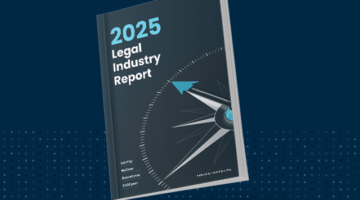 To make the most of your litigation team, ensure everyone knows how they fit in and how to work together.
To make the most of your litigation team, ensure everyone knows how they fit in and how to work together.
I’m hardly the first to say that complex litigation is a team sport. At our firm, every matter has at least two professionals assigned to it, with most having three, and some of the bigger matters regularly having five team members (I don’t think any of our matters, no matter how complex, have more than that, or should). When you have even two team members working together, they have to know how to communicate, who makes decisions, and even where to save information.
This is not as easy as it sounds, especially if you want to be efficient and to be ready to justify to your client why you needed that many people to take that long to prepare for one deposition or submit one ten-page brief. Even when your client doesn’t seem to care about the hours devoted to a task or matter (though as an expert we’re working with noted, it’s hard to meet a client who is not concerned about fees), you still want to do the best job possible (remember the Looney Tunes Rule of Litigation). That requires efficiency and organization.

Private Practice Lawyers: Rater Your Work With In-House Counsel
Please share your thoughts in this brief and anonymous survey.
I find it remarkable how little thought it seems many law offices devote to this concept—how staff members work together—and simply seem to assign staffers as needed without thinking how that staffer will fit into the team, share information, or determine who makes the final call.
That’s wrong. It may generate hourly fees, but it won’t help your client win.
To win at this team sport, managers of law offices and supervisors of these teams must take care of the basics, including giving thought to how exactly the teams work. Remember not to micromanage. You must give each professional his or her own space. However, you should decide right from the start: where and how you will share information? What communication is encouraged and what type of communication will be used (emails, internal chat programs, something else)? Who makes the ultimate end call? Even though there may be a partner in charge of the assignment, do you want that partner making all end decisions? If not, who does? More importantly, does the partner have that decision maker’s back? The answer to that last one should obviously be a resounding yes, but that is something firm leaders need to communicate so that teams know they will be protected when they do their work well even if they don’t do everything perfectly.
It’s not an easy balance. If you’ve hired the right people, then you mostly need to stay out of their way — but you cannot stay completely out of the way. Managers need to provide guidance and help their teams come up with the right plan for how to collaborate and win.

2025 Legal Industry Report: Key Insights for Law Firm Growth & Efficiency
Is your firm keeping up with legal finance and tech trends? The 2025 Legal Industry Report shows how firms optimize cash flow, automate payments, and use AI. Download now for key insights.
John Balestriere is an entrepreneurial trial lawyer who founded his firm after working as a prosecutor and litigator at a small firm. He is a partner at trial and investigations law firm Balestriere Fariello in New York, where he and his colleagues represent domestic and international clients in litigation, arbitration, appeals, and investigations. You can reach him by email at [email protected].